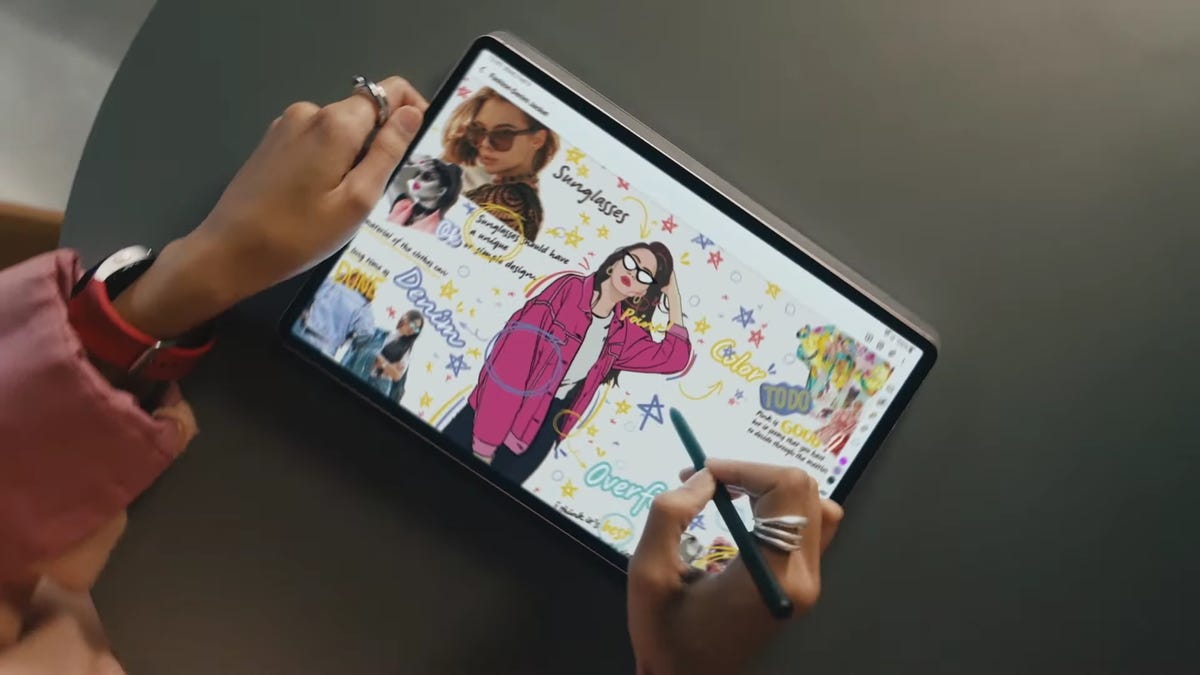Four Samsung Galaxy Tab S8 features we'd love to see on iPad
Samsung's latest big-screen tablets have things mysteriously absent from Apple's iPads.

Maybe Samsung's newest Galaxy Tab S8 Ultra should have been a Chrome tablet, instead of an Android tablet. The massively large-screened 14.6-inch tablet looks practically laptop-size with its keyboard. But looking at this new tablet being announced at Samsung's latest Unpacked event, it reminded me of how many features it has that iPads -- even the iPad Pro -- still lack.
I'm not even talking about the Tab S8 Ultra's extra-large screen size. A few of these features have been on Samsung's tablets for years now. Others are newer. From the camera placement to how it handles connections to monitors, I'd like to see all of these on future iPad Pro models, at the least.
A front-facing camera that's properly placed
Samsung put the webcam on its Tab S8 Ultra on the long edge, just like a laptop, a move which started on the Tab S7. That means, when it's docked in its keyboard, it'll make video calls that don't look off-center like they do on the iPad all the time. Apple continues to place its Facetime cameras on the shorter edge of the iPads, as if we're all holding them upright in portrait mode like iPhones. I almost never use an iPad like that -- in nearly every keyboard case I've ever seen, iPads are sitting on desks in landscape mode. And Samsung realizes that, and has placed its camera accordingly.
More versatile monitor support
Samsung's DeX software has touted its ability to connect phones and tablets to monitors for years, transforming Android into a more desktop-like computer interface with movable app windows. DeX isn't perfect, but Samsung is allowing its phones and tablets to connect to monitors and really expand app layouts, and even work on browsers with tabs in larger-screen formats. Apple's iPads connect to monitors, but almost exclusively in a screen-mirroring mode. Only a few apps use connected monitors to output any second-screen content at all, and iPadOS doesn't expand to fit a wider-screen monitor, or allow resizing or moving apps like DeX does. I'd love if iPads could allow monitors to expand workspaces and flex into more Mac-like work modes, but they don't yet.
An AMOLED display
Apple's iPhones have OLED displays, but its newest MacBook Pros and the 12.9-inch M1-based Pro have Mini LED displays. Mini LED boosts contrast and relative brightness and makes the displays more vivid compared to other iPad and MacBook screens, but AMOLED would be even better. Samsung's super-large Tab S8 Ultra looks to be the better display, but I haven't seen one in person yet. It would make sense for Apple to make a move to OLED for its higher-end iPads, at least. Maybe this year?
Pen(cil) included
Apple's iPad Pencil is a pretty fantastic art tool, but it's not included with the iPad. Samsung includes its S Pen with all of its new tablets, although the keyboards are sold separately. You don't need a Pencil to use an iPad, but considering how much the iPad Pro leans on being a pro tool for artists, a Pencil in the box would make a lot of sense. Of course, I never expect this to happen.

